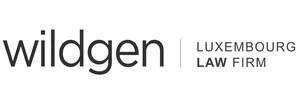For decades, the european patent system, in particular in the phase after granting a patent, has been very expensive and complex. For a granted patent to be effective in a Member State, the inventor has to request validation in each country where patent protection is sought. In total, obtaining patent protection in 27 Member States, including the procedural costs, could reach €36 000 today. In comparison, a US patent costs €1 850 on average1.
Based on these facts, the European Commission in April 2011 presented a package of legislative proposals, which will allow any company or individual to protect their inventions through a single European patent.
On 11 December 2012, the European Parliament approved these measures collectively known as the "EU Unitary Patent Package" consisting of a regulation creating a European patent with unitary effect (the "Unitary Patent"), a regulation establishing a language regime for the Unitary Patent and an international agreement setting up the "Unified Patent Court."
In this framework, the Regulation (EU) No 1257/2012 and the Regulation (EU) No 1260/2012 were published on 31 December 20122. Both EU Regulations are valid for all Member States -except Spain and Italy- participating in enhanced cooperation. The target implementation date for the unitary patent and Unified Patent Court is 1 April 2014. The agreement on a Unified Patent Court enters into force upon ratification by thirteen Member States, including the 3 Member States with the highest number of European patents.
The aim of the unitary patent system is to make Europe more attractive for investors and to bring Europe more into line with patent systems in Asia and the US.
The "EU Unitary Patent Package" Key points:
Reduction by up to 80% of translation and related costs (around €5 000)
- One single administrative step: any individual, company or organization is able to apply to the European Patent Office (EPO) for an EU unitary patent valid in all of the 25 member states taking part;
- Simplification of languages requirements: applications are to be filed in English, French or German but can be made in another language if a translation is provided. Patents will be made available in English, French and German;
- Reimbursement of translation costs: within the language regime, provisions made for translation costs to be reimbursed for EU-based SMEs, non-profit organisations, universities and public research organisations.
An unified patent litigation system
- Creation of a new Unified Patent Court ("UPC") to avoid duplication of litigation cases. The Unified Patent Court ("UPC") will have local and regional divisions, but also an important central division. The Court of Appeal will be based in Luxembourg.
In 2012, 63% of the filings received by the European Patent Office (EPO) came from non-European countries3: the main challenge of the "EU Unitary Patent Package" is to integrate more European countries to this picture in the forthcoming years.
Footnotes
1 European Commission press release, IP/11/470, 13 April 2011
2 Regulation (EU) No 1257/2012 of the European Parliament and of the Council 17 December 2012 implementing enhanced cooperation in the area of the creation of unitary patent protection (Official Journal of the EU, L 361/1 of December 31, 2012, p.1); Regulation (EU) No 1260/2012 of the European Parliament and of the Council 17 December 2012 implementing enhanced cooperation in the area of the creation of unitary patent protection with regard to the applicable translation arrangements (Official Journal of the EU, L 361/1 of 31 December 2012, p.89)
3 Source: EPO web site (http://www.epo.org/news-issues/news/2013/20130117.html and http://www.epo.org/news-issues/press/releases/archive/2013/20130117/countries.html )
The content of this article is intended to provide a general guide to the subject matter. Specialist advice should be sought about your specific circumstances.

